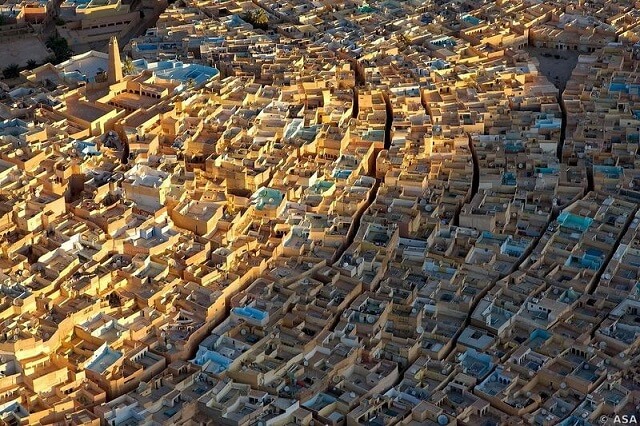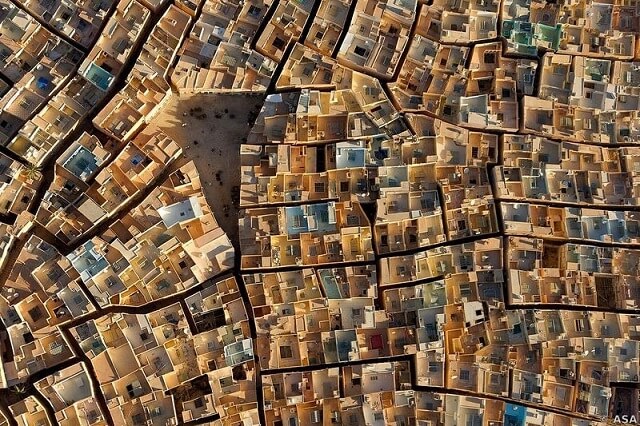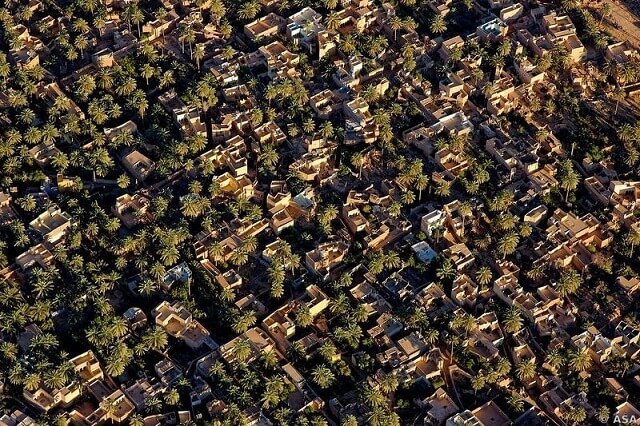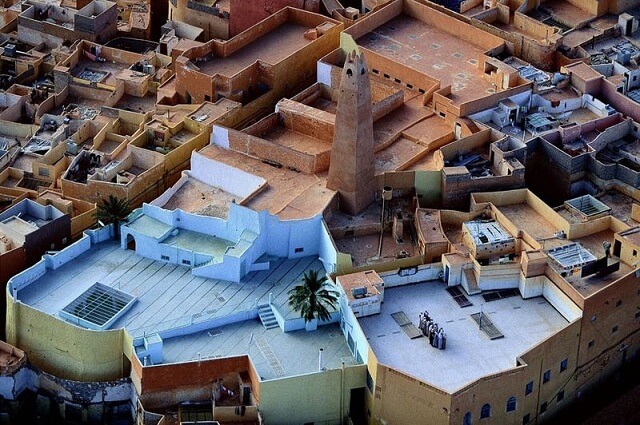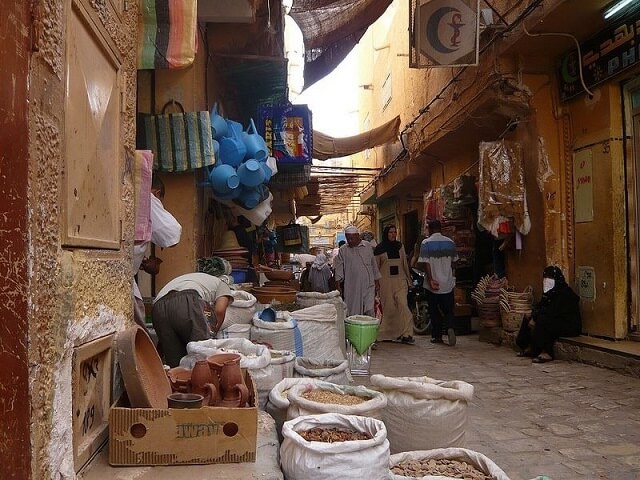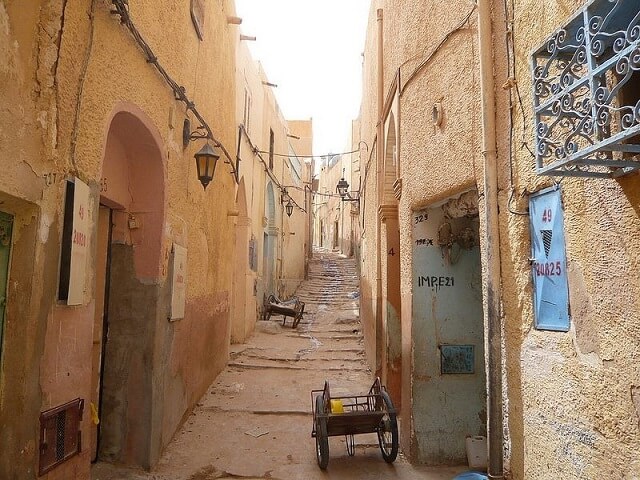A true model and source of inspiration for contemporary urban planners, the fortified towns of the M’zab Valley are simple, functional, and perfectly adapted to their environment. Located in the heart of the Sahara, approximately 600 km south of Algiers, the M’zab Valley is a deep and narrow valley. Spanning a distance of about 10 km along this valley, there exist five fortified villages that date back to the 11th century. These villages form a remarkably homogeneous ensemble and continue to reflect a sedentary civilization with an extraordinary culture. Throughout the centuries, they have managed to preserve their cohesion and original state.
These villages appear to have been frozen in time, remaining remarkably intact. Designed by Mozabite Berbers, each of the five towns—Ghardaia, Beni Isguen, Melika, Bou Noura, and El Atteuf—is situated atop a hill and surrounded by a labyrinth of pastel-colored houses. The houses are arranged in concentric circles around a central mosque, which still stands at the pinnacle of the hill.
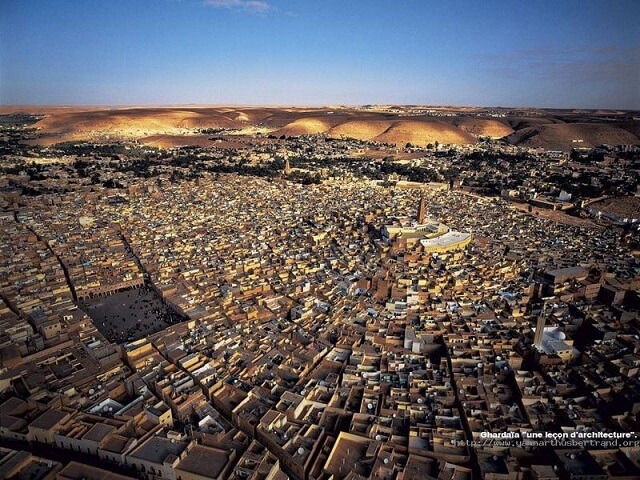
Located at the center of the towns and elevated, the mosques were intentionally designed as formidable fortresses, serving as both religious centers and watchtowers.
Regarding the houses, they were meticulously planned to foster a sense of community while simultaneously respecting the privacy of each family. This ingenious system was devised to accommodate the narrow streets and winding passages that characterize the towns.
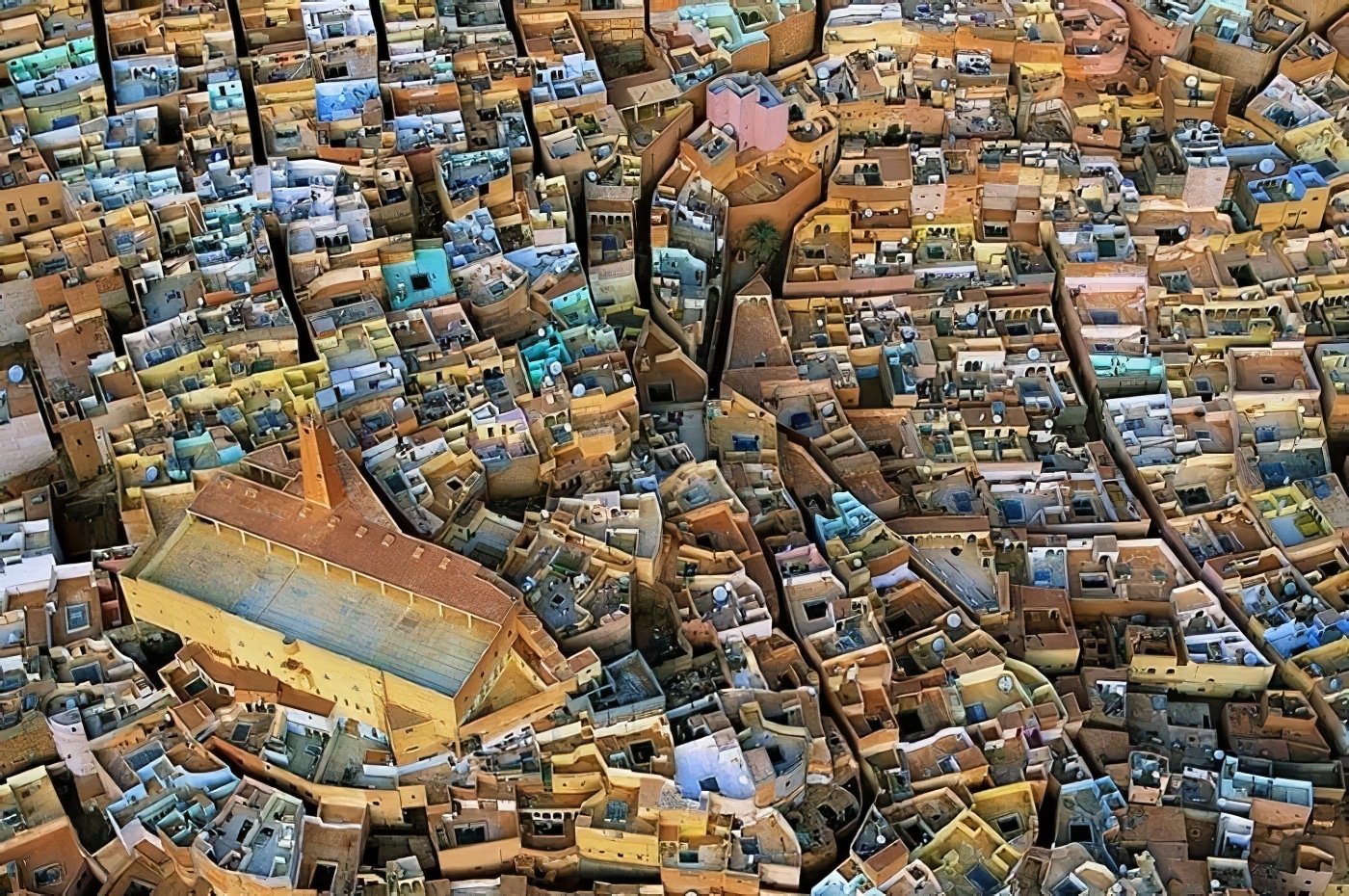
Each of the five cities in the M’zab Valley, despite their similar architectural style, possesses its own distinct identity. Ghardaïa serves as the main town and capital of the M’zab, while El-Ateuf boasts the oldest settlement in the region. Beni Isquen, on the other hand, remains the most enigmatic town in the valley. Considered sacred, Beni Isquen had historically been closed and fenced off at nightfall, although this practice is no longer observed. Nevertheless, it retains the most traditional settlement in the entire M’zab region.
In these towns, the women exhibit a strong aversion to being photographed, as described by Jonathan Oakes in his travel guide to Algeria. He explains, “You will notice that all the women here adhere to the tradition of wearing the haik, a large cloth that wraps around the body and face, leaving only one eye visible. Unmarried young women are allowed to reveal their faces, but after marriage, only one eye can be seen. When you make eye contact with one of these women, you’ll observe that they quickly adjust the fabric covering their face, leaving only a small hole to peer through. In the past, it was customary for women to turn towards the wall when encountering strangers. Although this is no longer the case, you will find that these women still make a deliberate effort to avoid direct eye contact and will often change their path if you happen to cross theirs. These women possess a captivating beauty, but capturing their images is strictly prohibited and would cause outrage.
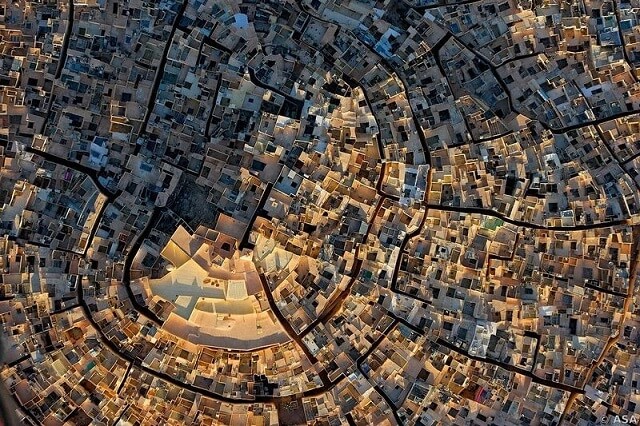
The fortified towns of the M’zab Valley stand as remarkable examples that harmoniously blend tradition and religion. Despite the passage of years and centuries, the communities have admirably preserved their original state and culture. This steadfast identity, resilient in the face of external influences, played a pivotal role in their inscription as UNESCO World Heritage sites in 1982. The recognition highlights the exceptional value of these towns and their significance to humanity, acknowledging their remarkable state of preservation and the unique cultural heritage they embody.
